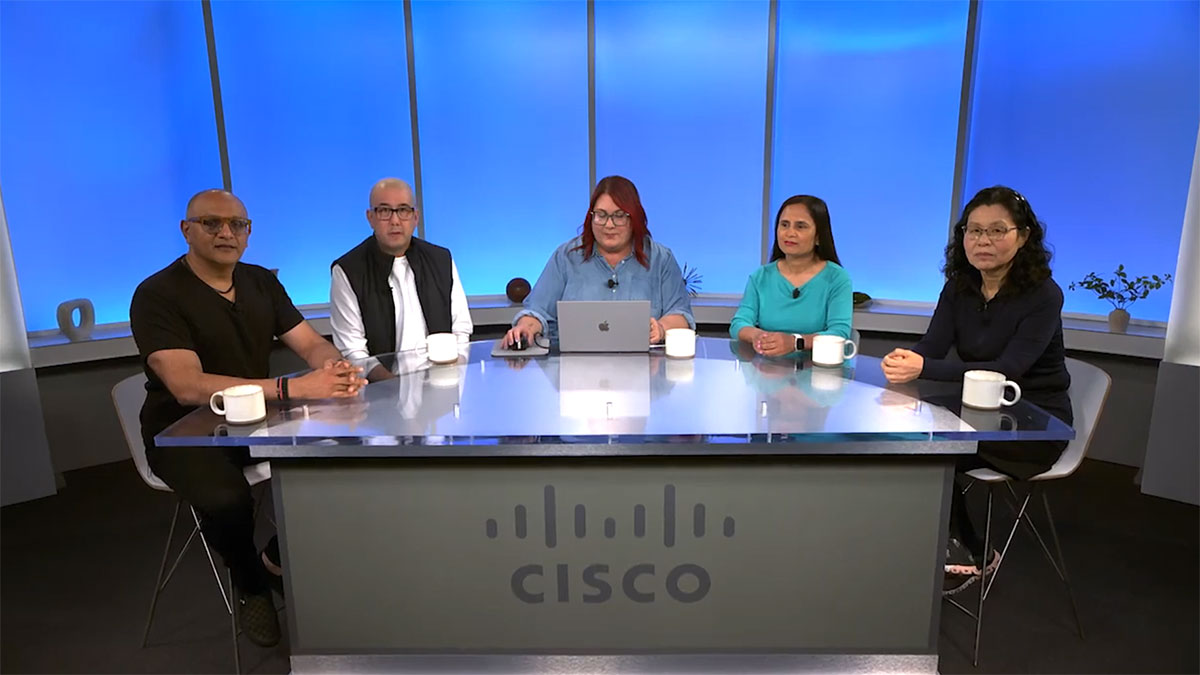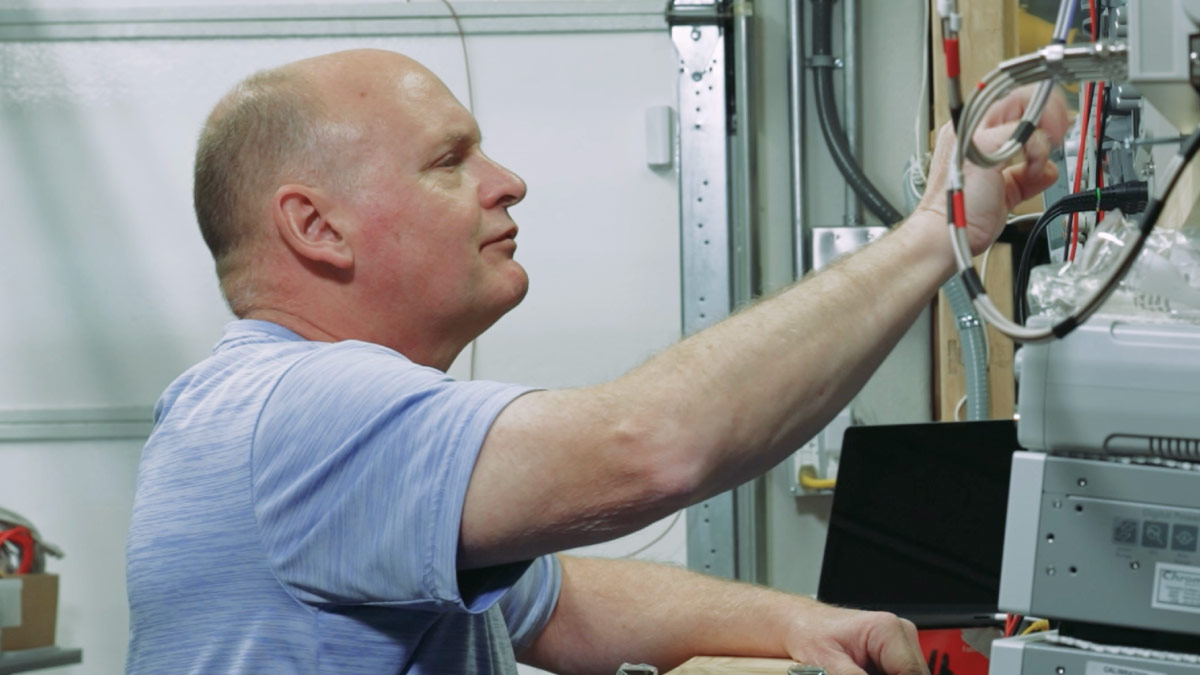SAN JOSE, Calif. - September 16, 1996 - Cisco Systems, Inc. today introduceda new multilayer switching technology for scaling router and switch backbones,including those of the Internet and large corporate intranets.
Tag Switching combines the performance and traffic management capabilitiesof Layer 2 (data link layer) switching with the scalability and flexibilityof Layer 3 (network layer) routing.
"Tag Switching defines a scalable means for routers to support theadvanced traffic management capabilities currently offered only by switchednetworks, while allowing switched networks to scale in the same manner astoday's global router backbones," said John Morency of The Registry,a network consultancy based in Newton, Mass.
This new technology is a cornerstone of Cisco's comprehensive solutionset for scaling the Internet. (See accompanying release, "Cisco Scales The Internet.") As such, the company first will implement Tag Switchingon its high-end, Cisco 7500 series routers andCisco StrataCom BPX switches.
Cisco also plans to make Tag Switching available as a Cisco IOS softwareupgrade on other routers and ATM, wide-area and LAN switches.
Extending Cisco's History of Leadership in Scaling Large Networks
"Tag Switching is the latest in a series of Cisco innovations forscaling all aspects of corporate and service provider networks," saidEd Kozel, Cisco's chief technical officer. "The best way to achievescalable performance is through multilayer switches, which combine the bestaspects of routers and switches."
Scalable Platforms
Cisco has delivered a number of increasingly powerful switching mechanisms,such as NetFlow Switching, to scale its multiprotocol routers. NetFlow Switchingenables customers to significantly boost the performance of network-layerservices providing security, quality of service (QoS) and traffic accountingcapabilities.
Scalable Campus Backbones
In 1994, the company introduced its CiscoFusion architecture for scalingcampus networks. This occurred as campus networks began the transition fromshared-media hubs to wiring closet switching systems interconnected by switchedbackbones.
CiscoFusion is based on distributed routing protocols that enable routersto cache packet-forwarding information into edge switches. This techniquehelps campus network managers optimize the operation of virtual LANs, whichaddress pressing administrative issues such as moves, adds and changes.
For example, these distributed routing protocols and the ATM Forum'sMultiprotocol Over ATM (MPOA) specification - being developed by Cisco andother vendors - will allow for the cut-through of traffic between virtualLANs and maximize router utilization.
Scalable Internet/Intranet Backbones
Now, with Tag Switching, Cisco is addressing the urgent need to scalerouter backbones, which are being stressed by the exponential growth ofInternet and intranet traffic.
Router networks generally fall into one of two categories: (1) a large-scalenetwork of interconnected routers or (2) a network of switches (LAN, ATMor Frame Relay) connecting routers at its edge. Tag Switching adds significantnew capabilities to both types of router backbones.
How Tag Switching Works
Tag Switching is a new technique for high-performance packet forwardingthat assigns a label or "tag" to packets traversing a networkof routers and switches.
In a conventional router network, each packet must be processed by eachrouter to determine the next hop of the packet toward its final destination.
In a Tag Switching network, tags are assigned to destination networksor hosts. Packets then are switched through the network with each node simplyswapping tags rather than processing each packet. A Tag Switching networkwill consist of a core of tag switches (either conventional routers orswitches),which connect to tag edge routers on the network's periphery.
Tag edge routers and tag switches use standard routing protocols suchas EIGRP, BGP and OSPF to identify routes through the network. These systemsthen use the tables generated by the routing protocols to assign and distributetag information via a Tag Distribution Protocol. Tag switches and tag edgerouters receive the Tag Distribution Protocol information and build a forwardingdatabase. The database maps particular destinations to the tags associatedwith those destinations and the ports through which they are reachable.
When a tag edge router receives a packet for forwarding across the tagnetwork, it analyzes the network-layer header and performs applicable networklayer services. It then selects a route for the packet from its routingtables, applies a tag and forwards the packet to the next-hop tag switch.
The tag switch receives the tagged packet and switches the packet basedsolely on the tag, without re-analyzing the network-layer header. The packetreaches the tag edge router at the egress point of the network, where thetag is stripped off and the packet delivered.
Tag Switching is complementary to Cisco's NetFlow Switching. NetFlowSwitching provides high-performance processing of value-added Layer 3 servicesin tag edge routers at the edge of a network. Tag Switching provideshigh-performanceswitching of packets in the core of the network.
Benefits of Tag Switching
Tag Switching brings a number of benefits to Internet service providersand enterprise network administrators:
- It allows Layer 2 switches to participate in Layer 3 routing. This increases network scalability because it reduces the number of routing peers that each edge router must deal with.
- It enables new traffic tuning mechanisms in router-based networks by integrating virtual circuit capabilities available previously only in Layer 2 fabrics. With Tag Switching, packet flows can be directed across the router network along pre-determined paths, similar to virtual circuits, rather than along the hop-by-hop routes of normal routed networks. This enables routers to perform advanced traffic management tasks, such as load balancing, in the same manner as ATM or Frame Relay switches.
- It can be applied not only to the Internet Protocol (IP) but to any other network-layer protocol. "Tag Switching is independent of the routing protocols employed," said Kozel. "While the Internet runs on IP, a lot of campus backbone traffic is transported on protocols such as IPX. A pure IP solution would not be adequate for mostcustomers."
Extensions to Tag Switching will allow tag-switched networks to set upmultiple paths across the network and offer differentiated QoS to packetflows. In this way, networks can support real-time packet traffic. Tag Switchingalso will support the routing hierarchy required for large-scale networks.
According to Morency, the first application of Tag Switching likely willbe in the Internet, where scalability issues are most prevalent. "Unlikeother approaches, Tag Switching, by associating tags with groups ofdestinations,obviates the need for cumbersome protocol and packet-processing overhead,"Morency said. "In addition to conserving connection space, Tag Switchingminimizes the need for slow-flow classification within switches and greatlyincreases scalability and performance.
"Flows classification - allowed but not mandated by Tag Switching- is important for real-time traffic, but does not scale for general Internettraffic," he added. "Over time, scalability issues likely willarise in large-scale corporate intranets, as well."
Tag Switching offers a particularly significant benefit to ATM switchingsystems used in wide area networks. Their scalability isn't limited by signalingperformance issues. Today, the standards for packet transport over ATM,such as LAN Emulation and the emerging MPOA, are more appropriate for localcampus networks than wide area networks because they can be signaling-intensive.
Well-designed ATM switches can cope with the signaling set-up rates requiredin most campus networks. But setting up connections for each of the packetflows on the Internet is not feasible because it would require signalingset-up rates far greater than anything possible today or in the foreseeablefuture.
With Tag Switching, however, fast paths can be pre-established throughthe network to all attached networks. This minimizes the need for exercisingATM signaling protocols and greatly reduces the processing burden on ATMswitches.
Unlike other approaches, Tag Switching "still allows ATM switchesto perform ATM Forum standard User-to-Network (UNI) signaling and PrivateNetwork-to-Network (P-NNI) routing functions in parallel," said Morency."The switches reserve UNI and P-NNI only for the real-time, nativeATM traffic that requires ATM's quality of service on-demand capabilities,while transferring the burden of transporting highly dynamic packet flowsto the less processor-intensive Tag Switching mechanism."
Standardization and Licensing
Cisco is submitting the key Tag Switching specifications to the InternetEngineering Task Force (IETF) for standardization through cross-industrydeliberation. Drafts of the Tag Switching Architecture Overview and theTag Distribution Protocol specification are available at:
- ftp://ftp-eng.cisco.com/bdavie/draft-doolan-tdp-spec-00.txt, respectively.
These documents also will be available on the IETF's draft directories.
The company plans to extend Tag Switching to other switching technologiessuch as Fast Ethernet and Gigabit Ethernet. Cisco will work within the Instituteof Electrical and Electronic Engineers (IEEE) to build upon the IEEE 802.1Qgroup's work on virtual LAN identifiers for Tag Switching on such LAN media.
"Beyond standards, Tag Switching places a premium on the sophisticationof routing protocols implemented on tag switches," Morency noted,"becausethese protocols provide the intelligence for tag switches." Cisco plansto license Cisco IOS Tag Switching technology to its Cisco IOS partners.For example, the company expects to work with partner vendors to implementTag Switching on network interface cards used for high-speed serverinterconnection.
"We believe the industry will greatly benefit from Tag Switching'sability to alleviate bottlenecks in Internet and intranet backbones,"Kozel said. "And we welcome the industry's help in refining and finalizingour Tag Switching mechanism. Neither customers nor the industry will benefitfrom the current proliferation of limited and proprietary mechanisms."
Availability
Tag Switching technology is expected to be available for field trialson Cisco 7500 series routers and Cisco LightStream. 1010 campus ATMswitches in the first half of 1997. Versions for the Cisco StrataCom BPXwide area ATM switch are expected to be available later in 1997.





